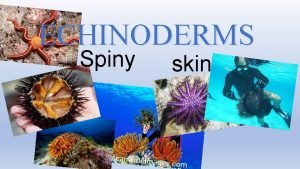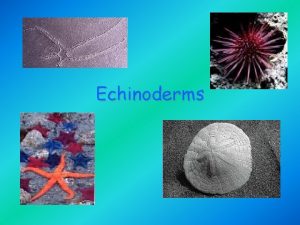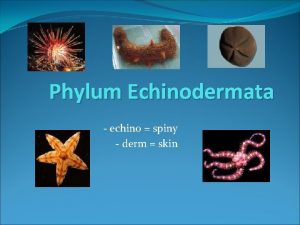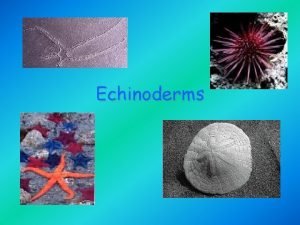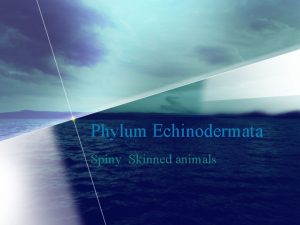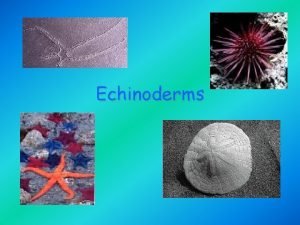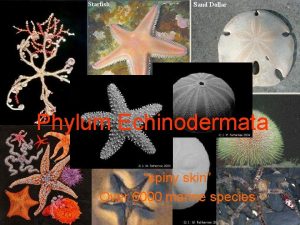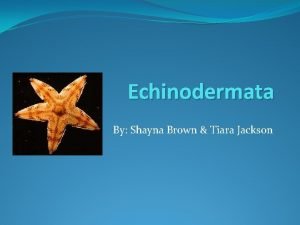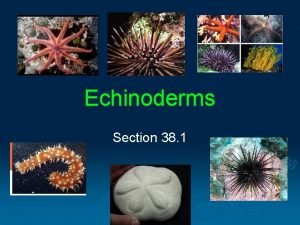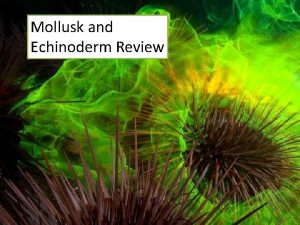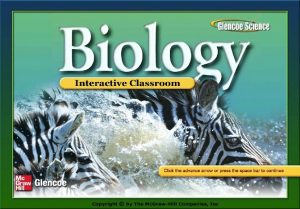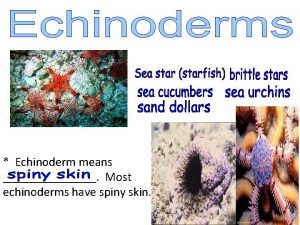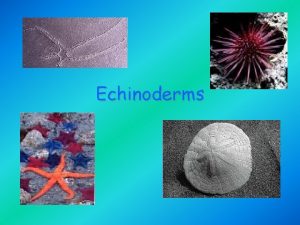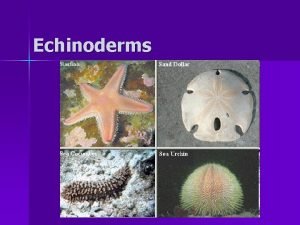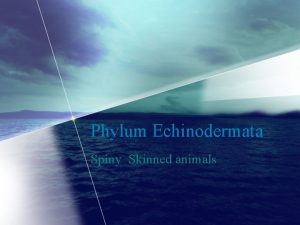ECHINODERMS Spiny skin What is an echinoderm Echinoderms










- Slides: 10

ECHINODERMS Spiny skin

What is an echinoderm? ▪ Echinoderms move by means of hundreds of ______, suction-cup-tipped appendages and have skin covered with tiny, jawlike pincers. ▪ Echinoderms are found in all the oceans of the world.

Echinoderms have endoskeletons ▪ SKIN: all have a hard, spiny, or bumpy _____skeleton (NEW but related to (? ) the pen in advanced mollusks? ) covered by a thin epidermis. ▪ Endoskeleton of all echinoderms is made primarily of _________, the W hy M compound that makes up limestone. ollu are ech Why Ca. CO 3? CO 2 is easy… Ca… sk in log s in o oderm u eni s af cp r ter ape r? phy

Echinoderms have endoskeletons ▪ The endoskeleton often protrudes to the outside of the body creating _________. These are modified into… Pedicellariae ▪ Jawlike pinchers used for… ▪ 1. ▪ 2. ▪ 3.

Echinoderms have radial symmetry ▪ Radial symmetry is an advantage to animals that are ______________ (so. . . A step back or just maintaining a beneficial trait? ) ▪ Radial symmetry enables these animals to sense potential food, predators, and other aspects of their environment from all directions.

The water vascular ▪ system The _____________is a hydraulic system that operates under water pressure. ▪ Water enters and leaves the water vascular system of a sea star through the ________, a sievelike, disk-shaped opening on the upper surface of the echinoderm’s body. Hmmm… Madrepora are a class of stony CORAL. If you remember… CORAL is an animal in the cnidarian phylum. Remember… Coral produces an “exoskeleton” made of calcium carbonate.

The water vascular system ▪ The underside of a sea star has ___________ that run along a groove on the underside of each ray (L____ C______) which is connected to the R____ C______ and S____ C______

The water vascular ▪system Tube feet are hollow, thin-walled tubes that end in a suction cup. ▪ The round, muscular structure called the ampulla works something like the bulb of a dropper. ▪ Each tube foot works independently of the others, and the animal moves along slowly by alternately pushing out and pulling in its tube feet.

The water vascular system ▪ Tube feet also function in gas exchange and excretion, and feeding! Tube feet - starfish = wastes are passed from stomach to WVS sea cucumber = absorb, pass in “reverse” to pharynx, to intestine, to anus Sea Urchins – in addition to locomotion, they also have photoreceptors!

Echinoderms have varied nutrition ▪ All echinoderms have a mouth, stomach, and intestines, but their methods of obtaining food vary. ▪ Sea stars are carnivorous and prey on worms or on mollusks such as clams. ▪ Most sea urchins are herbivores and graze on algae. ▪ Brittle stars, sea lilies, and sea cucumbers feed on dead and decaying matter that drifts down to the ocean floor.
